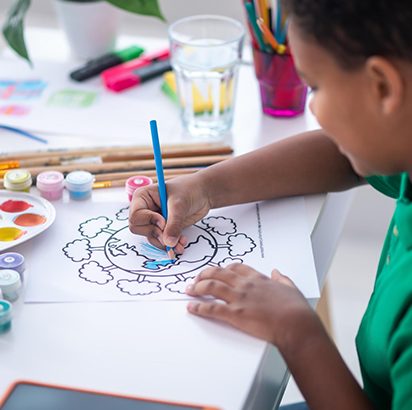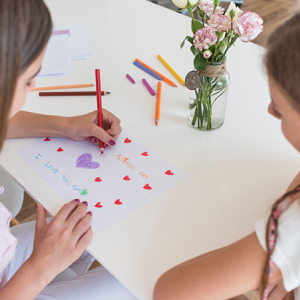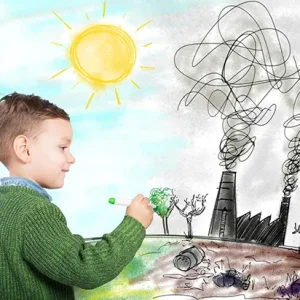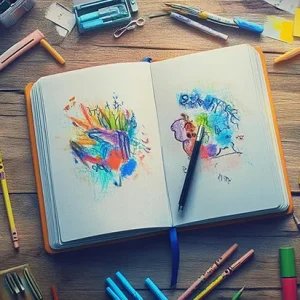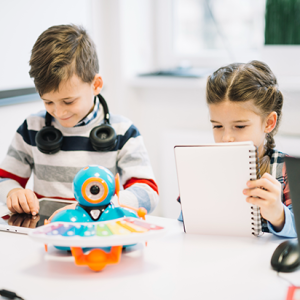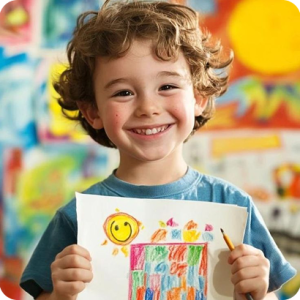As children begin to explore the world around them, one of the most vital things they need is confidence. Confidence shapes how they interact with others, tackle challenges, and grow in their abilities. And one of the most powerful ways to build confidence in young children is through art. Through the simple act of creating, children not only develop new skills but also gain the self-assurance to believe in their own abilities. This is where art books like How To Draw: Workbook for Young Artists by Ellie Christine Patton come into play—helping children develop both their artistic skills and their self-esteem in a fun, engaging way.
The Magic of Art in Building Confidence
Art, at its core, is a personal expression. For children, it provides a unique opportunity to explore their creativity in an open and judgment-free space. Whether it’s doodling a smiley face or creating a masterpiece of their own, children feel a deep sense of accomplishment when they finish an artwork. This process of creation helps them believe in their abilities, and every small success in art leads to a larger sense of confidence that can spill over into other aspects of their lives.
Ellie Christine Patton, the author of How To Draw: Workbook for Young Artists, understands the power of art in shaping young minds. Through her workbook, she’s designed a simple yet effective tool to help children build confidence step-by-step. By using approachable instructions and focusing on fun, easy-to-follow steps, Patton enables kids to experience success early on, thereby boosting their confidence in their capabilities.
How Ellie Patton’s Workbook Helps Build Confidence
In her workbook, How To Draw: Workbook for Young Artists, Ellie Patton introduces young children to the fundamentals of drawing with a focus on creating cute, cartoon-style animals and objects. At first glance, these adorable characters might seem like just playful sketches, but they serve a much more significant purpose—they are the building blocks of a child’s self-confidence.
1- Breaking Down the Drawing Process
One of the first challenges children face when learning art is feeling overwhelmed by what they see as complex tasks. But Patton’s workbook breaks everything down into manageable, simple steps. With each lesson, children are guided through the drawing process with clear instructions, allowing them to create their drawings one small part at a time. This step-by-step approach not only makes drawing less intimidating but also ensures that children experience frequent moments of success as they progress. With each completed drawing, they gain confidence in their ability to accomplish tasks, no matter how small or big.
2- The Power of Repetition and Mastery
Repetition plays a crucial role in building confidence, especially for young learners. As children continue to follow the same steps over and over, their skills improve, and they begin to master the technique. In Patton’s workbook, children are encouraged to trace, repeat, and refine their drawings. This consistent practice fosters muscle memory, which not only enhances their drawing skills but also reinforces their belief in their ability to improve. With each new drawing, their confidence grows as they see their own progress and refinement.
3- Celebrating Success
The feeling of accomplishment is vital in boosting a child’s self-esteem. Patton’s workbook is designed to make children feel proud of their creations. After completing a drawing, children are encouraged to take a moment to celebrate their success. Whether it’s adding their own personal touch to the characters or simply admiring their work, this sense of accomplishment builds a sense of pride. This positive reinforcement helps them see that their efforts are worthwhile, which is essential in developing long-term confidence.
4- Fostering Creativity and Self-Expression
Art is not just about creating something “perfect.” It’s about expressing oneself and experimenting with new ideas. Patton’s workbook encourages children to use their imagination and make each drawing their own. By allowing young artists the freedom to add personal touches or take creative liberties with the characters, the workbook helps them view art as an outlet for personal expression rather than a series of rules they must follow. This creativity encourages self-confidence, as children feel empowered to bring their ideas to life without fear of judgment.
Building Confidence Beyond the Drawing Board
While How To Draw: Workbook for Young Artists is focused on teaching drawing skills, the confidence that children gain from these activities goes far beyond the page. The self-assurance they develop while creating art translates into various areas of their lives, helping them approach challenges with a positive attitude and persistence.
1- Problem-Solving Skills
As children learn to draw, they encounter obstacles—shapes that don’t quite look right or lines that aren’t as smooth as they imagined. These challenges force children to think critically and find solutions. This problem-solving process is a key part of building confidence. As they figure out how to fix their drawings, children develop a mindset that’s more open to challenges in other aspects of life.
2- Improved Self-Expression and Communication
Art provides children with a way to communicate their thoughts, feelings, and ideas without relying on words. By giving children the tools to express themselves creatively, art helps them gain confidence in communicating their inner world to others. This form of self-expression helps children understand that their ideas are valuable, further boosting their self-esteem.
3- Positive Social Interactions
One of the greatest joys that Ellie Patton imagines is children giggling and sharing their colorful creations. Art has a social aspect, and when children share their work with others, it reinforces their sense of pride and accomplishment. Whether it’s showing a drawing to a friend, teacher, or family member, the positive feedback they receive boosts their confidence and makes them feel validated. This sense of community support encourages children to continue growing their creative skills and self-esteem.
The Lifelong Impact of Confidence Through Art
As children continue to engage with creative activities like drawing, they carry the confidence they’ve built through art into adulthood. The ability to tackle challenges, express oneself openly, and embrace mistakes as opportunities for growth are valuable skills that serve children well throughout their lives.
Ellie Christine Patton’s workbook is more than just a tool for learning how to draw. It’s a resource for nurturing self-esteem and empowering young children to believe in their abilities. Through fun and approachable lessons, kids not only develop their artistic talents but also gain the confidence to take on new challenges and pursue their creative passions.
In the end, the greatest reward of any art activity is not just the finished product, but the confidence that grows with each stroke of the pen, each line drawn, and each unique creation brought to life. And with How To Draw: Workbook for Young Artists, children embark on a journey that is as much about self-discovery and confidence-building as it is about learning to draw.

